
Having been an ardent supporter of contemporary representational art since the early 1990s, stretching the spectrum from the hyperreal to the nearly abstract, I’m happy to introduce this special section on modern art, which we’re defining as encompassing “any painting or sculpture that toys with the edge of the representational all the way into the realm of the purely abstract.”
Several decades before taking up the banner of “realist” art, I worked at what was then the Albright-Knox Art Gallery in Buffalo, New York, which has an extraordinary collection of 20th century non-objective art assembled primarily by two gifted and insightful men, the benefactor Seymour Knox and the museum’s then director Gordon Smith and his successors.
I have to admit that in the beginning I didn’t “get it.” I sat in front of the art, studied, met the artists and asked countless questions of our associate director, Jim Wood, who would go on to head the Art Institute of Chicago and later, the J. Paul Getty Trust. I came to understand modern art’s place in history, its roots and its ability to expand awareness and expression.
When I was in Buffalo, I knew of Peter Stephens but we had never met until he had an exhibition here in Santa Fe last November. I had, however, included one of his paintings inspired by the photographer Eugène Atget in an exhibition at the Arnot Art Museum in Elmira, New York. His work at that time was a “look at the way nostalgia and romanticism is codified through an overlay of historical and cultural distance.” Since then, he has explored the science of pattern inspired by the “fundamental forces of nature.”
Denne historien er fra April 2023-utgaven av American Art Collector.
Start din 7-dagers gratis prøveperiode på Magzter GOLD for å få tilgang til tusenvis av utvalgte premiumhistorier og 9000+ magasiner og aviser.
Allerede abonnent ? Logg på
Denne historien er fra April 2023-utgaven av American Art Collector.
Start din 7-dagers gratis prøveperiode på Magzter GOLD for å få tilgang til tusenvis av utvalgte premiumhistorier og 9000+ magasiner og aviser.
Allerede abonnent? Logg på

FULL EXPOSURE
Photographer Conor Martin documents the present using photographic methods of the past.
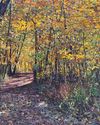
Autumnal Light
The landscapes and nature scenes of painter Jennifer Sowders are irresistibly tactile, filled with varying textures that seem to leap off the canvas.
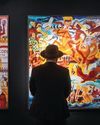
Art for All
Members of Art Dealers Association of America come together for a philanthropic affair.
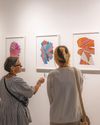
Modern Marketplace
Redwood Art Group brings together the San Diego region for another class-act celebration of contemporary artwork.
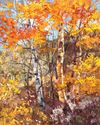
An Enchanting Evening
Scottsdale Artists’ School knows how to throw an art party.
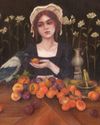
Timeless Tales
Soft, warm undertones underscore the mood of enchantment that runs through Nom Kinnear King’s paintings.

Next Exit New York
Coming off his series that focused on San Francisco and Los Angeles freeway signs, artist Eric Nash’s sights are now set on New York. Now on view at George Billis Gallery's Manhattan location are seven of Nash's new oil paintings and two drawings that explore the signage of New York City freeways. Although Nash's work is tightly rendered, he doesn’t consider himself a photorealist, but rather someone who utilizes those techniques to express ideas.

Monster Mash
Vampires, witches, ghouls and all things that go bump in the night are the theme of the exhibition Monster Mash, now at Abend Gallery.

Inside/Outside
Those familiar with Geoffrey Johnson's populated by inky figures and trailing shadows that bleed into the wet streets, and architectural elements obscured to varying degrees by the misty atmosphere.
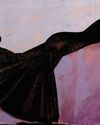
Bold Figures; Bold Color
For Brooklyn based painter J Louis, it’s all about balance, which can mean many different things in a composition, but for Louis, it’s about balancing his female figures among a unique landscape of color.